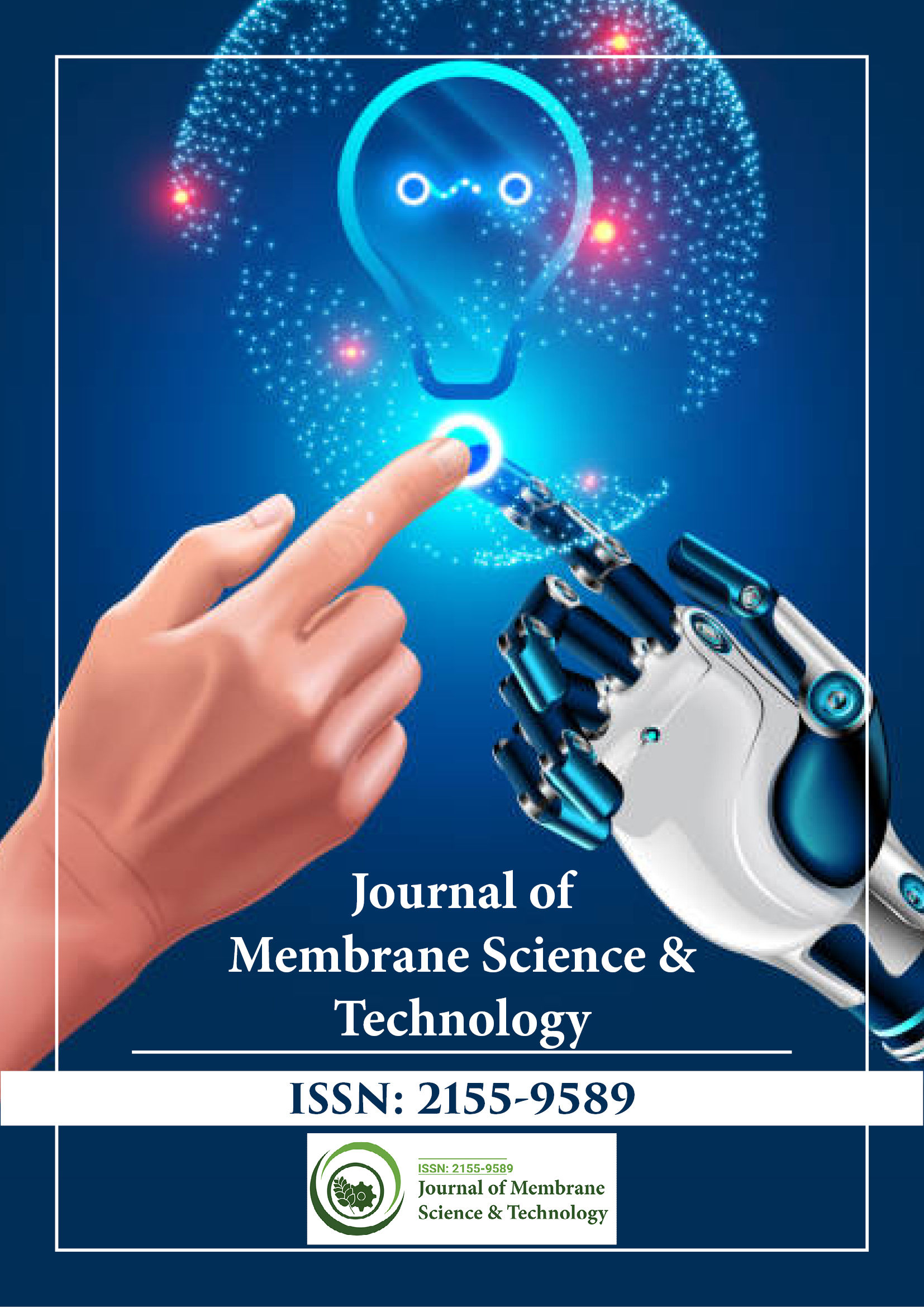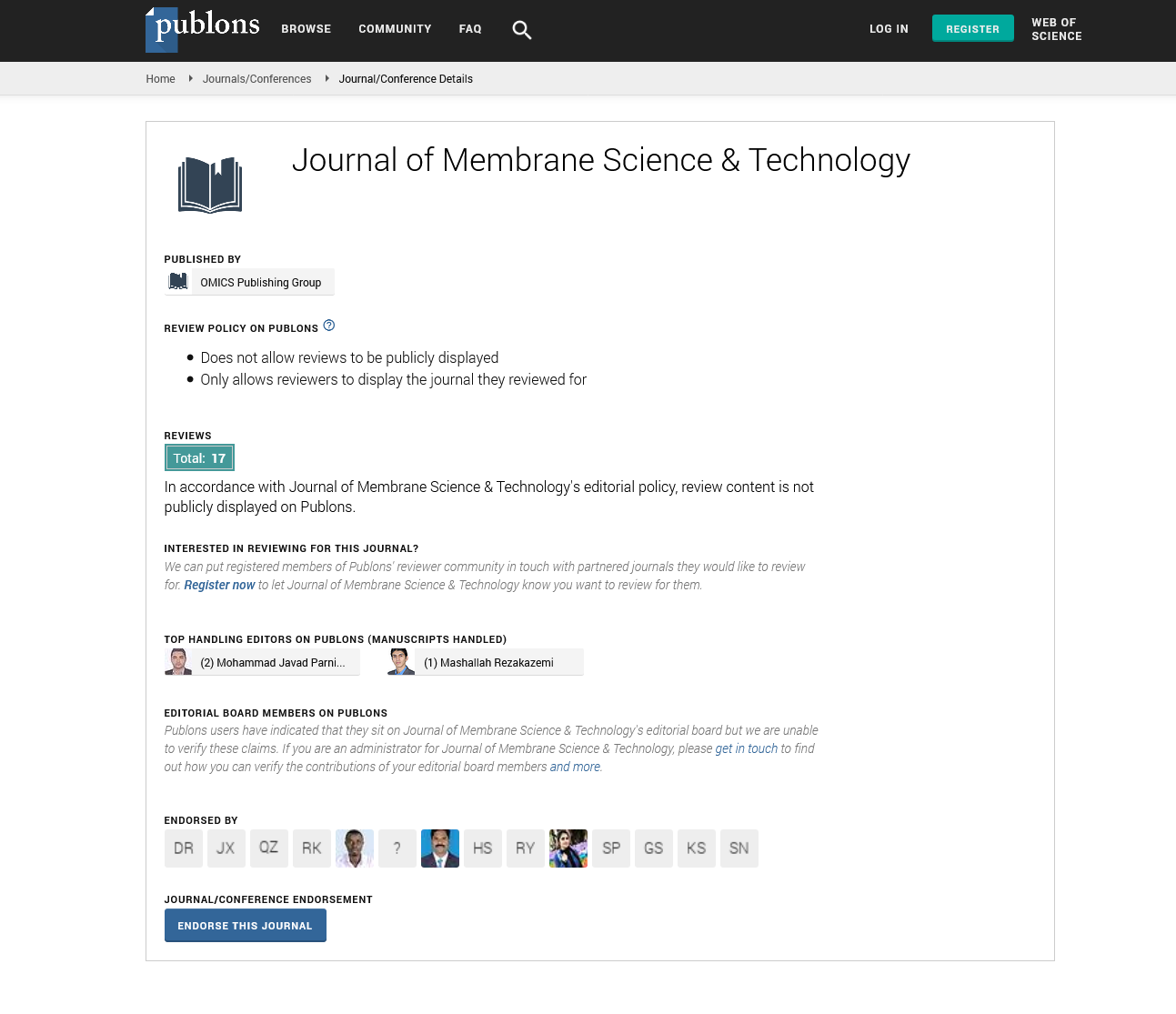Indexed In
- Open J Gate
- Genamics JournalSeek
- Ulrich's Periodicals Directory
- RefSeek
- Directory of Research Journal Indexing (DRJI)
- Hamdard University
- EBSCO A-Z
- OCLC- WorldCat
- Proquest Summons
- Scholarsteer
- Publons
- Geneva Foundation for Medical Education and Research
- Euro Pub
- Google Scholar
Useful Links
Share This Page
Journal Flyer

Open Access Journals
- Agri and Aquaculture
- Biochemistry
- Bioinformatics & Systems Biology
- Business & Management
- Chemistry
- Clinical Sciences
- Engineering
- Food & Nutrition
- General Science
- Genetics & Molecular Biology
- Immunology & Microbiology
- Medical Sciences
- Neuroscience & Psychology
- Nursing & Health Care
- Pharmaceutical Sciences
Perspective - (2024) Volume 14, Issue 4
Membrane Bioreactors in Effluent Treatment: Progress, Difficulties and Sustainability
Lena Kowalski*Received: 29-Nov-2024, Manuscript No. JMST-24-27301; Editor assigned: 02-Dec-2024, Pre QC No. JMST-24-27301 (PQ); Reviewed: 16-Dec-2024, QC No. JMST-24-27301; Revised: 23-Dec-2024, Manuscript No. JMST-24-27301 (R); Published: 30-Dec-2024, DOI: 10.35248/2155-9589.24.14.406
Description
Membrane Bioreactors (MBRs) have become an integral technology in wastewater treatment, combining biological degradation with membrane filtration to achieve high-quality effluent standards. MBRs are widely used in municipal and industrial wastewater treatment, particularly where space, efficiency, and strict regulatory compliance are critical. This article explains into recent advances, major challenges, and the role of MBRs in sustainable wastewater treatment.
Membrane Bioreactors (MBRs)
MBRs are hybrid systems that integrate biological treatment processes, typically using microorganisms, with membrane filtration. In a typical MBR setup, microorganisms in the bioreactor break down organic contaminants in wastewater, while the membrane serves as a physical barrier to remove suspended solids and pathogens. The result is a clarified and sanitized effluent with lower contaminant levels than conventional treatment methods.
There are two main configurations of MBRs:
Submerged MBRs (SMBRs): In these systems, membranes are submerged directly in the bioreactor, allowing wastewater to pass through under low-pressure conditions. SMBRs are energy- efficient and commonly used in municipal wastewater treatment.
External MBRs (EMBRs): In EMBRs, the membrane module is placed outside the bioreactor, and wastewater is circulated through it using a pump. EMBRs offer easier maintenance and higher treatment efficiency, though they require more energy than SMBRs.
Advances in membrane bioreactor technology
The popularity of MBRs has led to numerous advancements in materials, design, and operational methods, enhancing their efficiency and sustainability.
Membrane material innovations: The development of advanced membrane materials, such as ceramics and composite polymers, has improved MBR performance. Ceramic membranes, for instance, exhibit high chemical and thermal stability, making them suitable for harsh industrial wastewater applications. These materials also offer improved antifouling properties, reducing the frequency of maintenance.
Enhanced antifouling strategies: Fouling, where contaminants build up on the membrane surface, is a major issue in MBR systems. Researchers have developed antifouling techniques such as surface coatings, periodic backwashing, and air scouring to prevent fouling and prolong membrane life. Novel membrane coatings, like hydrophilic or nanocomposite layers, help reduce fouling by repelling contaminants.
Smart sensing and automation: Integrating sensors and automation technology in MBRs enables real-time monitoring of water quality, membrane condition, and bioreactor parameters. Automated systems adjust operational conditions based on data, improving efficiency and reducing manual intervention.
Benefits of membrane bioreactors in wastewater treatment
MBRs offer several advantages over conventional wastewater treatment methods, especially in applications requiring high-quality effluent:
High-quality effluent: MBRs provide excellent effluent quality, effectively removing suspended solids, bacteria, and pathogens. This makes MBRs ideal for water reuse applications, including irrigation, industrial processes, and even potable water production after additional treatment.
Compact design and space efficiency: MBR systems require less space than traditional treatment systems, as the biological and filtration processes are integrated within the same unit. This compact design is particularly advantageous in urban areas where land availability is limited.
Conclusion
Membrane bioreactors offer a high-performance solution for wastewater treatment, combining biological degradation with membrane filtration to achieve superior effluent quality. Advances in materials, design, and process integration have enhanced MBR efficiency and sustainability, positioning them as a major technology for water reclamation and environmental protection. Despite challenges related to fouling, energy consumption, and cost, continued innovation in MBR technology is to address these limitations and expand their applicability. With a focus on sustainable practices, MBRs have the significant to contribute significantly to global wastewater management, water conservation, and resource recovery efforts.
Citation: Kowalski L (2024). Membrane Bioreactors in Effluent Treatment: Progress, Difficulties and Sustainability. J Membr Sci Technol. 14:406.
Copyright: © 2024 Kowalski L. This is an open-access article distributed under the terms of the Creative Commons Attribution License, which permits unrestricted use, distribution, and reproduction in any medium, provided the original author and source are credited.

